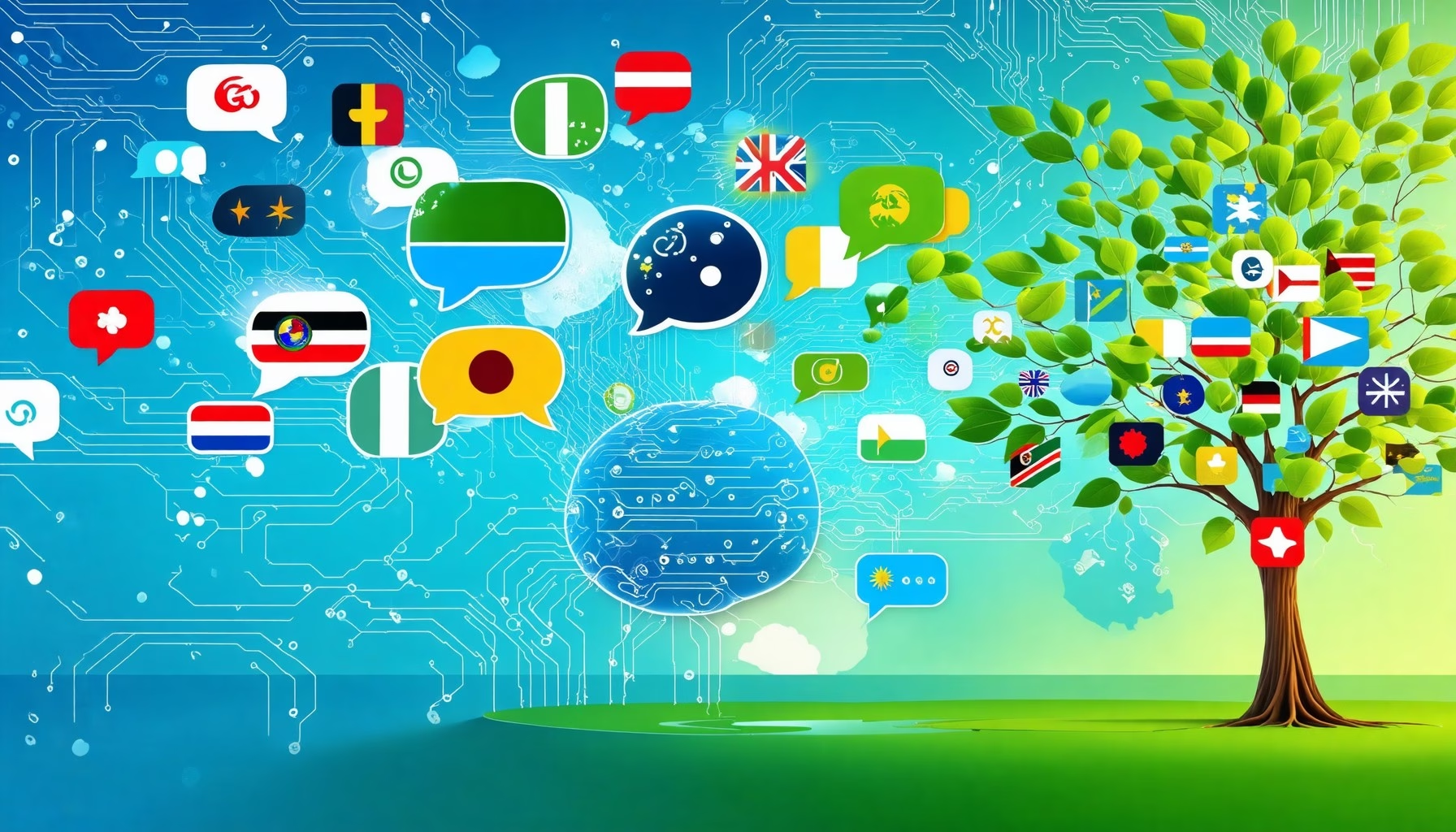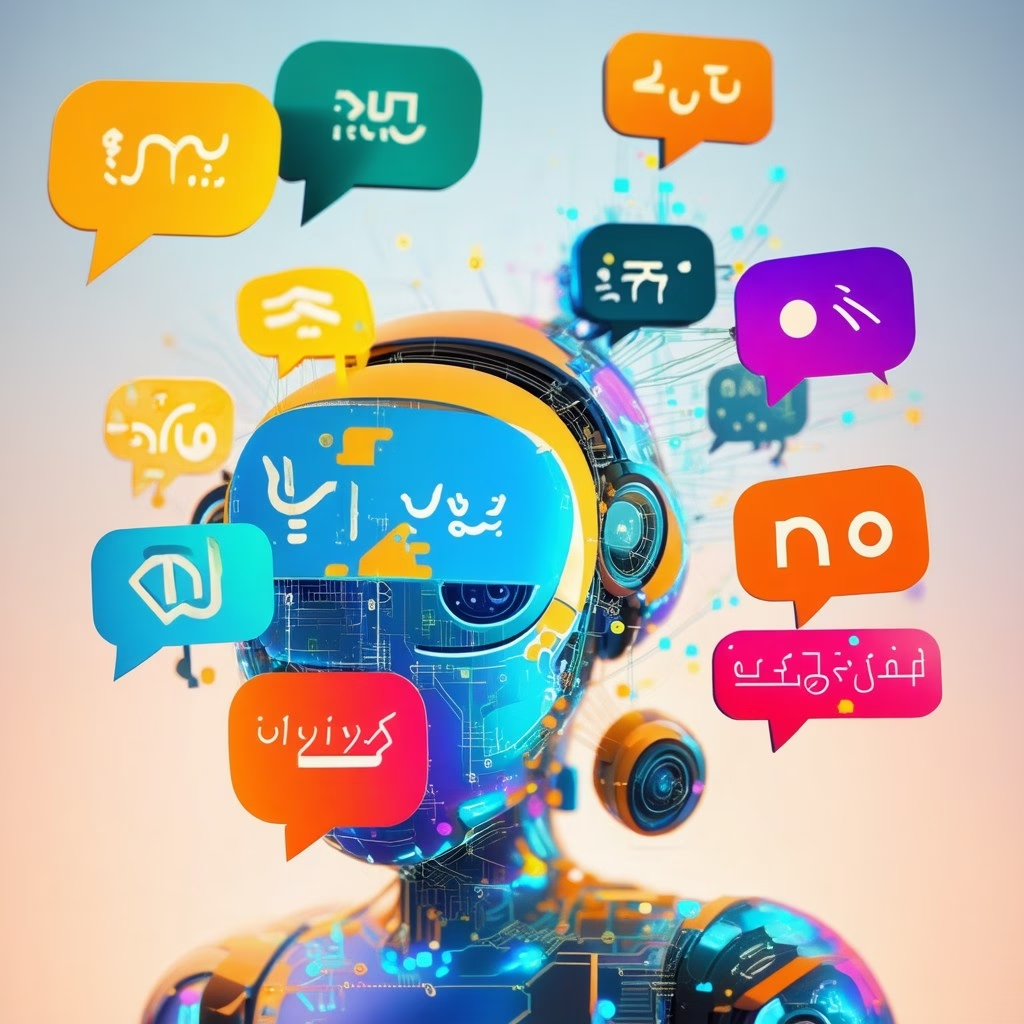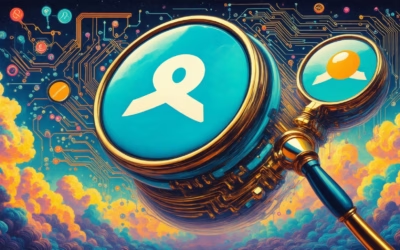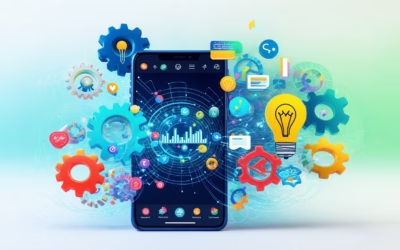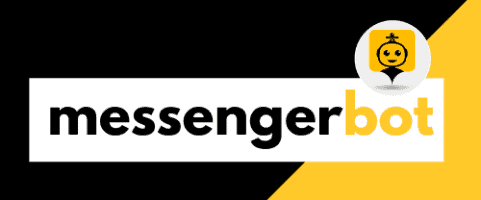Key Takeaways
- Multilingual chatbots enhance customer engagement by providing support in users’ preferred languages, improving satisfaction and loyalty.
- These chatbots leverage AI and NLP to adapt and learn language nuances, ensuring effective communication across diverse markets.
- Cost efficiency is achieved by automating multilingual interactions, reducing the need for hiring additional multilingual staff.
- Integration capabilities with platforms like Messenger allow businesses to reach customers on popular messaging apps, expanding their communication channels.
- Utilizing resources like multilingual chatbot GitHub repositories can accelerate development and offer valuable insights into best practices.
In today’s globalized world, effective communication across languages is more crucial than ever, and this is where the multilingual chatbot comes into play. These innovative tools not only enhance multilingual customer service but also bridge the gap between businesses and their diverse clientele. In this article, we will explore the multilingual chatbot arena, delving into what defines a multilingual chatbot and its pivotal role in customer interactions. We will compare the best multilingual chatbots available, examining their features and capabilities, including insights into multilingual chatbot GitHub resources for developers. Additionally, we will guide you through the steps to create your own multilingual chatbot, utilizing tools and technologies that simplify the process. As we investigate whether ChatGPT is multilingual and analyze Duolingo’s approach to language learning, we will also touch upon the broader implications of multilingual AI in business. Join us as we uncover the best practices and implementation strategies for effective multilingual communication, ensuring your chatbot meets the needs of a global audience.
What is a multilingual chatbot?
A multilingual chatbot is an advanced conversational agent designed to communicate with users in multiple languages, enhancing user experience and accessibility. These chatbots utilize artificial intelligence (AI) and natural language processing (NLP) to understand and respond to inquiries in various languages, making them invaluable for businesses operating in diverse markets.
Understanding the Basics of Multilingual Communication
Multilingual communication refers to the ability to engage in conversations across different languages, which is essential in today’s globalized world. A multilingual chatbot facilitates this by:
- Language Recognition: Multilingual chatbots can automatically detect the user’s preferred language based on input, allowing for seamless interaction without requiring users to specify their language.
- Dynamic Learning: Unlike traditional chatbots that rely on static rules, multilingual chatbots leverage machine learning algorithms to improve their understanding of language nuances, slang, and context over time. This adaptability enhances their ability to conduct meaningful conversations.
- Wide Application: These chatbots are used across various industries, including customer service, e-commerce, and healthcare, to provide support in multiple languages, thereby increasing customer satisfaction and engagement.
- Cost Efficiency: By automating customer interactions in various languages, businesses can reduce operational costs associated with hiring multilingual staff while maintaining high-quality service.
- Integration Capabilities: Many multilingual chatbots can be integrated with platforms like Messenger, allowing businesses to reach customers on popular messaging apps, further expanding their communication channels.
The Role of Multilingual Chatbots in Customer Service
In the realm of multilingual customer service, chatbots play a crucial role. Recent studies indicate that businesses utilizing multilingual chatbots can see a significant increase in customer retention and satisfaction rates (Source: Harvard Business Review, 2022). As globalization continues to expand, the demand for multilingual chatbots is expected to grow, making them a crucial tool for companies aiming to enhance their global presence (Source: Gartner, 2023).
In summary, multilingual chatbots represent a significant advancement in customer interaction technology, offering businesses the ability to engage with a broader audience while improving operational efficiency and customer experience. For those interested in exploring the development of these chatbots, resources like multilingual chatbot GitHub repositories and research papers can provide valuable insights into best practices and innovative solutions.
Which is the best multilingual AI chatbot?
When considering the best multilingual AI chatbot, several factors come into play, including language support, ease of integration, and customer service capabilities. Here are some top contenders:
- ProProfs Chat: This platform excels in providing 24/7 customer support in over 70 languages. It is designed for businesses of all sizes, from startups to corporate giants, enabling them to engage effectively with a global audience. ProProfs Chat offers features like automated responses, live chat, and analytics, making it a comprehensive solution for customer engagement. According to a study by Gartner, companies that utilize AI chatbots can improve customer satisfaction by up to 30% (Gartner, 2022).
- Chatbot.com: Known for its user-friendly interface, Chatbot.com supports multiple languages and allows businesses to create customized chat experiences. Its integration capabilities with various platforms, including e-commerce sites and CRM systems, make it a versatile choice. A report from Business Insider highlights that multilingual chatbots can enhance user experience and increase conversion rates by 20% (Business Insider, 2023).
- Tidio: Tidio offers multilingual support and is particularly effective for small to medium-sized businesses. It combines live chat and chatbot functionalities, allowing for seamless customer interaction. Tidio’s AI-driven insights help businesses understand customer behavior better, leading to improved service delivery. Research from Forrester indicates that chatbots can reduce operational costs by up to 30% while maintaining high service levels (Forrester, 2023).
- Zendesk Chat: This platform integrates well with existing customer service tools and supports multiple languages. Zendesk Chat is ideal for businesses looking to enhance their customer support experience through AI-driven solutions. According to a survey by HubSpot, 73% of consumers prefer to communicate with businesses via chat, highlighting the importance of effective chatbot solutions (HubSpot, 2023).
In conclusion, the best multilingual AI chatbot depends on your specific business needs, but ProProfs Chat stands out for its extensive language support and comprehensive features. For businesses looking to enhance customer engagement globally, investing in a robust multilingual chatbot can lead to significant improvements in customer satisfaction and operational efficiency.
Features of the Best Multilingual Chatbots
The features of a multilingual chatbot can significantly impact its effectiveness in enhancing customer service. Here are some key features to consider:
- Language Support: A top multilingual chatbot should support a wide range of languages, allowing businesses to cater to diverse customer bases. This feature is crucial for companies operating in multiple regions.
- Integration Capabilities: The ability to integrate seamlessly with existing platforms, such as CRM systems and e-commerce sites, is essential. This ensures that the chatbot can access relevant customer data and provide personalized interactions.
- Analytics and Reporting: Robust analytics tools help businesses track user interactions and measure the effectiveness of their chatbot. Insights gained from analytics can inform improvements and enhance customer engagement strategies.
- Customizable Workflows: The best multilingual chatbots allow businesses to create tailored workflows that respond to specific user behaviors, improving the overall customer experience.
- AI-Driven Insights: Utilizing AI technology, these chatbots can learn from interactions and provide insights into customer preferences and behaviors, enabling businesses to refine their strategies.
By focusing on these features, businesses can select a multilingual chatbot that not only meets their operational needs but also enhances the overall customer experience. For more insights on chatbot functionalities, check out our guide on Transforming Customer Engagement.
How do I make my chatbot multilingual?
Creating a multilingual chatbot involves several strategic steps to ensure effective communication across different languages. By following these comprehensive steps, you can enhance user experience and engagement:
- Determine User Language Preferences: Start by asking users to select their preferred language. Use a Bot Response block to present language options clearly. This initial interaction sets the foundation for a personalized experience.
- Store User Language Selection: Once a user selects a language, utilize a Set Attribute block to save this preference. This ensures that the chatbot can respond in the chosen language throughout the conversation.
- Implement Language-Specific Responses: For each language supported, create tailored responses. This may involve translating existing content or generating new responses that resonate culturally with users. Tools like Google Translate can assist, but ensure to review translations for accuracy and context.
- Utilize Language Detection APIs: Consider integrating language detection APIs, such as Google Cloud Translation or Microsoft Translator, to automatically identify user language based on input. This can enhance user experience by reducing the need for manual selection.
- Test Multilingual Functionality: Conduct thorough testing to ensure that the chatbot responds accurately in all supported languages. Engage native speakers to validate the quality of interactions and make necessary adjustments.
- Monitor User Engagement: After deployment, analyze user engagement metrics to assess the effectiveness of your multilingual capabilities. Tools like Google Analytics can provide insights into user behavior across different languages.
- Continuous Improvement: Regularly update your chatbot’s language capabilities based on user feedback and emerging language trends. This ensures that your chatbot remains relevant and effective in serving a diverse audience.
By following these steps, you can effectively create a multilingual chatbot that enhances user experience and engagement. For further reading on chatbot development and multilingual capabilities, refer to resources from the International Journal of Human-Computer Interaction and industry blogs like Chatbots Magazine.
Tools and Technologies for Multilingual Chatbot Development
To develop a multilingual chatbot, leveraging the right tools and technologies is crucial. Here are some recommended options:
- Rasa: An open-source framework that supports the development of multilingual chatbots. It allows for customization and integration of various languages, making it a popular choice in the multilingual chatbot arena.
- Multilingual Chatbot GitHub Repositories: Explore various GitHub repositories dedicated to multilingual chatbot projects. These resources often include datasets and code samples that can accelerate your development process.
- Python Libraries: Utilize libraries such as NLTK and spaCy for natural language processing tasks. These tools can help in building language models that support multiple languages effectively.
- Translation APIs: Integrate APIs like Google Cloud Translation or Microsoft Translator to facilitate real-time translation of user inputs and responses, enhancing the multilingual capabilities of your chatbot.
By utilizing these tools and technologies, you can streamline the development of your multilingual chatbot, ensuring it meets the diverse needs of your audience while providing a seamless user experience.
Is ChatGPT Multilingual?
Yes, ChatGPT is multilingual and supports over 95 languages, making it a versatile tool for users around the globe. Its primary strength lies in English, where it demonstrates the highest proficiency due to extensive training on diverse datasets. However, the model’s performance can vary significantly across different languages, particularly with less common ones, where it may exhibit lower accuracy and fluency.
In addition to natural languages, ChatGPT is capable of understanding and generating code, which enhances its utility for developers and technical users. While it serves as a powerful resource for multilingual communication, users should remain cautious of potential inaccuracies, especially in nuanced contexts or idiomatic expressions.
Recent advancements in AI language models, including ChatGPT, have focused on improving language understanding and generation capabilities. For instance, studies have shown that incorporating user feedback can enhance the model’s performance in specific languages over time (source: OpenAI Research).
Overall, while ChatGPT is a robust tool for multilingual interactions, users should verify critical information and consider the context in which they are using the model to ensure effective communication.
Use Cases for ChatGPT in Multilingual Environments
ChatGPT’s multilingual capabilities open up a range of use cases that can significantly enhance user experience and engagement. Here are some notable applications:
- Customer Support: Businesses can utilize ChatGPT to provide multilingual customer service, ensuring that users receive assistance in their preferred language. This can improve customer satisfaction and retention.
- Content Creation: Marketers and content creators can leverage ChatGPT to generate articles, social media posts, and marketing materials in multiple languages, streamlining their content strategy across diverse markets.
- Language Learning: ChatGPT can serve as a conversational partner for language learners, offering practice in various languages and helping users improve their language skills through interactive dialogue.
- Translation Assistance: While not a replacement for professional translation services, ChatGPT can assist users in translating phrases or sentences, providing a quick reference for multilingual communication.
By integrating ChatGPT into various applications, businesses and individuals can enhance their multilingual capabilities, making communication more efficient and effective across different languages.
Is Duolingo a Chatbot?
Duolingo is not strictly a chatbot; however, it has integrated chatbot-like features into its platform to enhance user interaction. The app utilizes artificial intelligence to facilitate language learning through interactive conversations. This includes a new feature that allows users to engage in live dialogues in various languages, simulating real-life conversations.
The AI-driven chatbot functionality is designed to provide immediate feedback and support, making language practice more engaging and effective. According to a recent study published in the Journal of Educational Technology & Society, interactive AI tools can significantly improve language retention and user engagement (Hwang, 2022).
Moreover, Duolingo’s approach to incorporating AI aligns with broader trends in language learning technology, where personalized learning experiences are becoming increasingly important. By leveraging AI, Duolingo aims to create a more immersive learning environment that adapts to individual user needs.
In summary, while Duolingo itself is not a chatbot, its use of AI-driven conversational features positions it as a leader in the integration of technology in language education. For further reading on the impact of AI in language learning, refer to sources like the Modern Language Journal and the International Review of Applied Linguistics in Language Teaching.
Analyzing Duolingo’s Approach to Language Learning
Duolingo employs a unique strategy in language learning that combines gamification with AI-driven interactions. This approach not only makes learning fun but also encourages consistent practice, which is crucial for language acquisition. The platform’s use of a multilingual chatbot GitHub repository showcases its commitment to open-source solutions, allowing developers to contribute to its evolving technology.
Additionally, Duolingo’s integration of a Rasa multilingual chatbot framework enhances its ability to cater to diverse linguistic needs. This framework allows for the development of chatbots that can understand and respond in multiple languages, making it an effective tool for multilingual customer service and language learning.
As the demand for language learning continues to grow, Duolingo’s innovative use of AI and chatbot technology positions it as a frontrunner in the multilingual chatbot arena, providing learners with a robust platform to enhance their language skills.
What is Multilingual AI?
Multilingual AI refers to artificial intelligence systems designed to understand, process, and generate text in multiple languages. This technology is pivotal in enhancing communication across linguistic barriers, making it essential for global applications. Key components of multilingual AI include:
- Language Models: Multilingual AI utilizes large language models (LLMs) that are trained on diverse datasets encompassing various languages. These models employ advanced architectures, such as transformers, which utilize self-attention mechanisms to effectively capture the syntactic and semantic nuances of different languages.
- Contextual Understanding: By leveraging contextual embeddings, multilingual AI can maintain the meaning of phrases and sentences across languages. This capability is crucial for applications like translation, sentiment analysis, and conversational agents.
- Applications: Multilingual AI is widely used in customer service chatbots, content localization, and social media monitoring. For instance, companies can deploy multilingual chatbots to interact with users in their preferred languages, enhancing user experience and engagement.
- Recent Advancements: Recent studies indicate that multilingual models, such as mBERT and XLM-R, outperform traditional monolingual models in various NLP tasks, demonstrating the effectiveness of cross-lingual transfer learning (Conneau et al., 2020).
- Challenges: Despite its advancements, multilingual AI faces challenges such as low-resource languages, where data scarcity can hinder model performance. Continuous research is focused on improving these models to ensure equitable language processing capabilities.
- Future Trends: The future of multilingual AI includes the integration of more languages, improved contextual understanding, and enhanced personalization features, allowing for more nuanced interactions in applications like virtual assistants and customer support systems.
Advantages of Multilingual AI in Business
Implementing multilingual AI can significantly enhance business operations, particularly in customer service. Here are some key advantages:
- Improved Customer Engagement: By utilizing a multilingual chatbot, businesses can communicate with customers in their preferred languages, fostering a more personalized experience. This approach not only increases satisfaction but also builds brand loyalty.
- Cost Efficiency: Multilingual AI reduces the need for hiring multilingual staff, as chatbots can handle inquiries in various languages simultaneously. This efficiency can lead to substantial cost savings for businesses.
- Scalability: As businesses expand into new markets, multilingual AI allows for seamless communication across different regions without the need for extensive retraining or additional resources.
- Data Insights: Multilingual AI systems can analyze customer interactions in multiple languages, providing valuable insights into user preferences and behaviors, which can inform marketing strategies and product development.
Multilingual Chatbot Resources and Community Insights
As businesses increasingly recognize the importance of multilingual customer service, the demand for multilingual chatbots continues to grow. To effectively leverage this technology, it’s essential to tap into available resources and community insights that can enhance your understanding and implementation of multilingual chatbots.
Multilingual Chatbot GitHub: Open Source Solutions
GitHub is a treasure trove for developers seeking multilingual chatbot solutions. Numerous open-source projects are available that can help you build a multilingual chatbot tailored to your specific needs. For instance, repositories featuring multilingual chatbot Python frameworks provide a robust foundation for creating chatbots that can communicate in multiple languages. These projects often include comprehensive documentation and community support, making it easier for developers to contribute and enhance existing functionalities.
Additionally, exploring multilingual chatbot datasets on GitHub can provide valuable training data for your models, allowing for improved accuracy and responsiveness in various languages. Engaging with these resources not only accelerates development but also fosters collaboration within the multilingual chatbot arena.
Engaging with the Multilingual Chatbot Reddit Community
Reddit hosts several communities dedicated to chatbots and AI, where enthusiasts and professionals share insights, experiences, and resources. Participating in these discussions can provide you with practical advice on overcoming the disadvantages of chatbots, such as language nuances and cultural context. Subreddits focused on multilingual AI chatbots can be particularly beneficial for networking with other developers and gaining insights into the latest trends and technologies.
Moreover, engaging with the community can lead to discovering innovative use cases for your multilingual chatbot, including applications in chatbots for learning languages or enhancing customer interactions in diverse markets. By leveraging these community insights, you can stay ahead in the rapidly evolving field of multilingual customer service.

